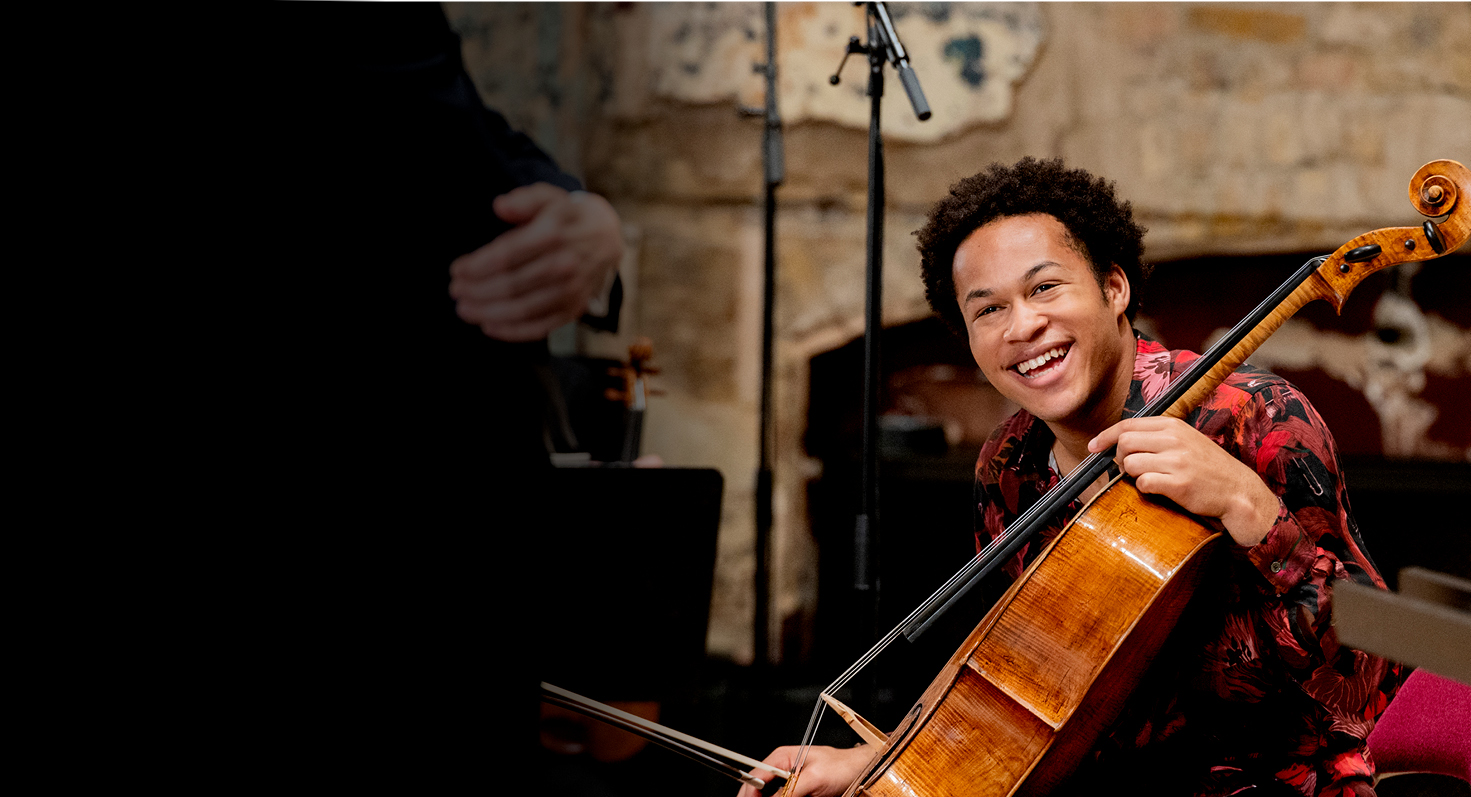Viola
Not simply a big violin, the viola has its own distinct qualities and serves an essential function in orchestral music.

Instrument: Viola
The Principal Viola Chair is endowed by the Tertis Foundation.
The No. 4 Viola Chair is endowed by Ruth and Henry Amar.
Endowment opportunities at the Philharmonia offer supporters unique access and insights to our players. Find out more here:
Introduction
The viola’s tone is thicker and darker than the violin which makes it perfect for providing resonant solo passages in the middle of the orchestral range and the perfect antidote to the penetrating, crystal quality of the violin. It also blends particularly well with the clarinet and bassoon.
Traditionally the viola was used in uninteresting ways simply to fill in the harmonies between the expressive cello and violin parts, but this is no longer the case. Violas can be every bit as agile as the other Strings and since the 19th century viola writing has just as demanding as that for the other string instruments.
The viola is the alto voice of the String family. It is larger than the violin, and its lowest note is a perfect 5th lower than the violin. A typical symphony orchestra will have twelve violas seated two to a desk for a large orchestral work.
Did you know?
The viola (like the violin) was developed in the 16th century. Andrea Amati was one of the first artisans to make the instrument.
Construction
The viola looks like a large violin and in terms of its construction it is more or less the same. In common with all string instruments, there are no fixed dimensions for a viola and both players and makers will have their own preferences. The ‘bigness’ of the sound produced has much more to do with the woods and varnish used than the actual size of the instrument (the player makes quite a difference too!). Different types of wood such as sycamore, spruce and maple are carefully selected for their grain and density.
One of the most important factors in determining the sound quality of the instrument is the varnish, which at first comes as a surprise to many people. The reason the varnish is so important is that it covers the entire exterior of the instrument, bonds with the surface of the wood and it is from this shiny surface that the sound of the instrument resonates. So the quality of the varnish can greatly affect the way the instrument resonates.
Range
There are four strings on the viola which are tuned a Perfect 5th apart. The lowest is C then G, D and A is the top string. The lower strings have a richer, darker sound and to exploit this it is quite common for composers to write that a particular phrase should be played on a particular string. Writing Sul C (on the C) or Sul G above the music asks the player to continue playing on the low C or G string when they would otherwise have moved up onto one of the higher strings.

Frequency Range
130 Hz – 1.8 kHz
Strings
C G D A
More about the viola
Lawrence Power Performs Salonen's Pentatonic Étude for solo viola
The Orchestral String Section: An Introduction
Lawrence Power: British Viola Virtuoso
Join us on Instagram
Keep up to date about online concerts, behind the scenes content and much more

Keep up to date
Sign up for email updates and be the first to receive stories, films and concert announcements

Support the Philharmonia
Enjoyed this content? We need your help to keep these resources free

